C.E. Clayton's Blog, page 3
January 2, 2020
The Decade of Living Boldly
Hello my dearest friends and Happy New Year! It’s not only the start of a new year which means fresh starts, new beginnings, and continuations of good habits (or stopping bad ones), but it’s also the start of a new decade. And! It’s the 20’s all over again! Which, as I reflect, this new era of the 20’s is already looking a lot like the 1920’s version: “The 1920s was the first decade to have a nickname: “Roaring 20s" or "Jazz Age." It was a decade of prosperity and dissipation, and of jazz bands, bootleggers, raccoon coats, bathtub gin, flappers, flagpole sitters, and marathon dancers. It was, in the popular view, when the younger generation rebelled against traditional taboos while their elders engaged in an orgy of speculation. But the 1920s was also a decade of bitter cultural conflicts, pitting religious liberals against fundamentalists, nativists against immigrants, and rural provincials against urban cosmopolitans.” - Digital History
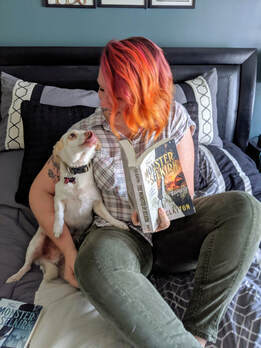 This gives me pause, and cause for reflection. Not just at a societal level but also on a personal one. This year, I too am rebelling against the “traditional taboo” and will be self-publishing my next fantasy series, and not because I think it’s unworthy of a traditional publishing house, but because I DO think it’s worthy. I DO love my story, and I don’t want to wait years and years for someone else’s validation in order to release it. Traditionally publishing is marvelous, or it can be, but it’s also so focused on market trends, of what’s easiest for someone to sell, or who had the money to hire a writing coach in order to perfect that query letter so an intern would pass it on to their boss. That came out more bitter than I intended, I’m honestly not, I am merely stating a reality. But self-publishing is a monumental step for me personally, because it is something that terrifies me, and not because of all the hard work it’ll be (which it will, but it’s worth it) but because this year I need to start seeing my own self-worth.
This gives me pause, and cause for reflection. Not just at a societal level but also on a personal one. This year, I too am rebelling against the “traditional taboo” and will be self-publishing my next fantasy series, and not because I think it’s unworthy of a traditional publishing house, but because I DO think it’s worthy. I DO love my story, and I don’t want to wait years and years for someone else’s validation in order to release it. Traditionally publishing is marvelous, or it can be, but it’s also so focused on market trends, of what’s easiest for someone to sell, or who had the money to hire a writing coach in order to perfect that query letter so an intern would pass it on to their boss. That came out more bitter than I intended, I’m honestly not, I am merely stating a reality. But self-publishing is a monumental step for me personally, because it is something that terrifies me, and not because of all the hard work it’ll be (which it will, but it’s worth it) but because this year I need to start seeing my own self-worth.
As I look back at the last year, and the last ten, I have done some pretty incredible things: I switched jobs and careers (twice), I got married, I moved cross country (twice), I bought and sold a house, I adopted 3 adorable fur babies, I welcomed two new family members into the world, I graduated college AND got my Master's degree, I traveled to some incredible places around the US and the world, I attended the wedding of my good friends, and my completed first series was published alongside 3 short stories. But I didn’t give myself permission to celebrate my personal accomplishments within those experiences. I made excuses as to why it wasn’t a big deal. I offered apologies when someone gave me praise, never excepting that what I did was good, or good enough. I’ve been working hard on fixing that, and looking back on my year and decade (the last year alone I published 2 books and 2 short stories) and how little permission I gave myself to be proud of what I built… it makes me genuinely sad.
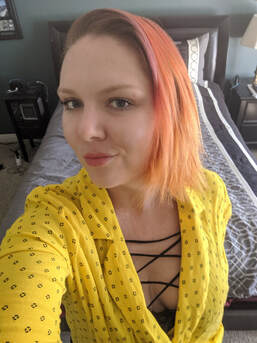 I am always surprised when people say they like my books, my characters, my worlds, and I am going to stop that. I always want to remain humble, because it’s utterly magical when a reader messages me to yell at me for breaking their heart, or doing a thing that made their night when reading my words, but I am going to try harder to believe that praise, to accept it, and to embrace the idea that I am, indeed, worthy of it. That I should fight and protect the space I occupy, and demand that I be allowed as much room as I need. That my body, my face, my talent, my humor, and my inability to go more than two sentences without swearing is, in fact, good enough. It’s hard, it won’t happen overnight or maybe even this year, but this decade, certainly. That’s why my goal of self-publishing this year is such a personal one for me. I am taking up my space, I am not waiting for someone else to tell me I am worthy of being heard. I am going to be the master of my own prosperity.
I am always surprised when people say they like my books, my characters, my worlds, and I am going to stop that. I always want to remain humble, because it’s utterly magical when a reader messages me to yell at me for breaking their heart, or doing a thing that made their night when reading my words, but I am going to try harder to believe that praise, to accept it, and to embrace the idea that I am, indeed, worthy of it. That I should fight and protect the space I occupy, and demand that I be allowed as much room as I need. That my body, my face, my talent, my humor, and my inability to go more than two sentences without swearing is, in fact, good enough. It’s hard, it won’t happen overnight or maybe even this year, but this decade, certainly. That’s why my goal of self-publishing this year is such a personal one for me. I am taking up my space, I am not waiting for someone else to tell me I am worthy of being heard. I am going to be the master of my own prosperity.
I hope you, too, feel no shame in taking up your space. I hope you live boldly and courageously this year and beyond. I hope you stick with me as I bring you new worlds and characters to explore and meet. I am still floored that people like (and love) what I create, and I thank you from the bottom of my heart for that support. I can’t wait to share more with you for many, many years to come!
 This gives me pause, and cause for reflection. Not just at a societal level but also on a personal one. This year, I too am rebelling against the “traditional taboo” and will be self-publishing my next fantasy series, and not because I think it’s unworthy of a traditional publishing house, but because I DO think it’s worthy. I DO love my story, and I don’t want to wait years and years for someone else’s validation in order to release it. Traditionally publishing is marvelous, or it can be, but it’s also so focused on market trends, of what’s easiest for someone to sell, or who had the money to hire a writing coach in order to perfect that query letter so an intern would pass it on to their boss. That came out more bitter than I intended, I’m honestly not, I am merely stating a reality. But self-publishing is a monumental step for me personally, because it is something that terrifies me, and not because of all the hard work it’ll be (which it will, but it’s worth it) but because this year I need to start seeing my own self-worth.
This gives me pause, and cause for reflection. Not just at a societal level but also on a personal one. This year, I too am rebelling against the “traditional taboo” and will be self-publishing my next fantasy series, and not because I think it’s unworthy of a traditional publishing house, but because I DO think it’s worthy. I DO love my story, and I don’t want to wait years and years for someone else’s validation in order to release it. Traditionally publishing is marvelous, or it can be, but it’s also so focused on market trends, of what’s easiest for someone to sell, or who had the money to hire a writing coach in order to perfect that query letter so an intern would pass it on to their boss. That came out more bitter than I intended, I’m honestly not, I am merely stating a reality. But self-publishing is a monumental step for me personally, because it is something that terrifies me, and not because of all the hard work it’ll be (which it will, but it’s worth it) but because this year I need to start seeing my own self-worth.As I look back at the last year, and the last ten, I have done some pretty incredible things: I switched jobs and careers (twice), I got married, I moved cross country (twice), I bought and sold a house, I adopted 3 adorable fur babies, I welcomed two new family members into the world, I graduated college AND got my Master's degree, I traveled to some incredible places around the US and the world, I attended the wedding of my good friends, and my completed first series was published alongside 3 short stories. But I didn’t give myself permission to celebrate my personal accomplishments within those experiences. I made excuses as to why it wasn’t a big deal. I offered apologies when someone gave me praise, never excepting that what I did was good, or good enough. I’ve been working hard on fixing that, and looking back on my year and decade (the last year alone I published 2 books and 2 short stories) and how little permission I gave myself to be proud of what I built… it makes me genuinely sad.
 I am always surprised when people say they like my books, my characters, my worlds, and I am going to stop that. I always want to remain humble, because it’s utterly magical when a reader messages me to yell at me for breaking their heart, or doing a thing that made their night when reading my words, but I am going to try harder to believe that praise, to accept it, and to embrace the idea that I am, indeed, worthy of it. That I should fight and protect the space I occupy, and demand that I be allowed as much room as I need. That my body, my face, my talent, my humor, and my inability to go more than two sentences without swearing is, in fact, good enough. It’s hard, it won’t happen overnight or maybe even this year, but this decade, certainly. That’s why my goal of self-publishing this year is such a personal one for me. I am taking up my space, I am not waiting for someone else to tell me I am worthy of being heard. I am going to be the master of my own prosperity.
I am always surprised when people say they like my books, my characters, my worlds, and I am going to stop that. I always want to remain humble, because it’s utterly magical when a reader messages me to yell at me for breaking their heart, or doing a thing that made their night when reading my words, but I am going to try harder to believe that praise, to accept it, and to embrace the idea that I am, indeed, worthy of it. That I should fight and protect the space I occupy, and demand that I be allowed as much room as I need. That my body, my face, my talent, my humor, and my inability to go more than two sentences without swearing is, in fact, good enough. It’s hard, it won’t happen overnight or maybe even this year, but this decade, certainly. That’s why my goal of self-publishing this year is such a personal one for me. I am taking up my space, I am not waiting for someone else to tell me I am worthy of being heard. I am going to be the master of my own prosperity.I hope you, too, feel no shame in taking up your space. I hope you live boldly and courageously this year and beyond. I hope you stick with me as I bring you new worlds and characters to explore and meet. I am still floored that people like (and love) what I create, and I thank you from the bottom of my heart for that support. I can’t wait to share more with you for many, many years to come!
Published on January 02, 2020 13:00
December 3, 2019
Holiday Recommendations
 Hi friends and booknerds! It's that time of year again, you know the one. The one where we seem to beg people to tell us what they want and they wait till the last second to tell you and then the thing ends up being sold out, or not in their size, so you end up just getting them a gift card anyway? That season known as Christmas? Well if any of you have family like mine, it can be hard to nail down what to get the people who seem to have pretty much everything, which is why this month's blog post is dedicated to highlighting some amazing small business owners and indie authors that you can introduce your impossible-to-shop-for- family to! I’m just nice like that, apparently.
Hi friends and booknerds! It's that time of year again, you know the one. The one where we seem to beg people to tell us what they want and they wait till the last second to tell you and then the thing ends up being sold out, or not in their size, so you end up just getting them a gift card anyway? That season known as Christmas? Well if any of you have family like mine, it can be hard to nail down what to get the people who seem to have pretty much everything, which is why this month's blog post is dedicated to highlighting some amazing small business owners and indie authors that you can introduce your impossible-to-shop-for- family to! I’m just nice like that, apparently. It’s easy to just pop on over to Amazon and buy pretty much everything on everyone’s wish list, but I am hoping to entice you over to some really amazing small shops and authors as they make for 1. Amazing unique gifts and 2. I have personally either read their books, purchased their products, or seen their work and believe it is worth sharing. Which means, YES! Not all of my holiday recommendations are book related! Some may be book adjacent, while others are even things like getting some custom art commissioned! Pretty awesome, right? Check out the list below and maybe find something really amazing for the awesome people on your shopping list this year:
Awesome Indie books:
Tyffany Hackett: this fabulous human not only writes great fantasy books, I've read both available and adored them if you've been reading my book reviews lately, but she also makes some lovely designs for mugs and stickers, too! I've bought one of her mugs and have gotten my copies of her Thanatos trilogy signed, and you can too! They make great gifts for the avid reader in your life.
Get signed books
Get bookish merchandise
Kate Shreean Swed: a fabulous author of sciene fiction, all of which are far future retellings of classic books. Everything from Great Expectations and Phantom of the Opera! The final book in this trilogy also released recently, so you can get either the entire box set, or individual signed books!
Find your perfect book option here
Adelaide Thorne: an incredible indie author of urban fantasy. I have read the first book in her series and LOVED it, and she just released the last book in her trilogy earlier this month! So now you can get the whole trilogy!
Get the books here
Becky Moynihan: if you like heart pounding dystopian fantasy with flavors of The Hunger Games, you have to check out Becky's "Elite Trials" series! I read the first book and really enjoyed it; so much so I've purchased the second one! Becky just announced the final book in the trilogy as well, so this is the perfect time to start the series and gift signed books to loved ones.Get signed copies here
Amazing artists:
Anna Vee Art: If you like the print I have of Tomas and Tallis and have always wanted your own favorite character (bookish or video game wise) brought to life with your vision, Anna is fabulous to work with!
Find out about her commission information here
Andrew Brown: an up-and-coming comic book style artist! I've gotten to know Andrew over the past few months and he's such a kind soul who is incredibly passionate about his work. He just opened his commissions, too!See his art and find out more about his commissions here
AJ Torres: I've had the pleasure of getting to know AJ over the past few months and not only is she a talented writer, but she does the cutest anime style art and designs! A perfect gift idea for the anime lover in your life.
Check out her designs here
Find out more about her art and commissions here
Incredible Bookish merchandise and candles:
Baj Goodson: this wonderful human not only writes creepy novellas (you can get those signed from her shop too, just saying), but she also creates some of the best bookmarks I've seen! PLUS! She also does graphic design if someone in your life was looking to have their brand redesigned, you can gift them that for the holidays, too! Baj does so much, and it's all so lovely, so I highly encourage you to browse her website for all the goodies you could get.Browse all of Baj's awesomeness here
Vitela Witch Craft: I won a pair of really cute gummy bear earrings from this shop and have fallen in love! There are so many cute accessories and fun little things to choose from, that this will make the perfect stocking stuffer for almost anyone on your list. Browse the Etsy shop here
Lunar Bazaar Candles: The shop owner, Kim, is such a talented human and I've loved every single candle and wax melt I've gotten from her shop. I've bought her products for gifts for others before, and she even made me a custom Tomas themed candle back in the day! Her candles are perfect for the bookworm and witchy scent lover in your life, guaranteed!Browse all the yummy candles here
Published on December 03, 2019 12:00
November 1, 2019
A Look at My Process for "How Far You Feel"
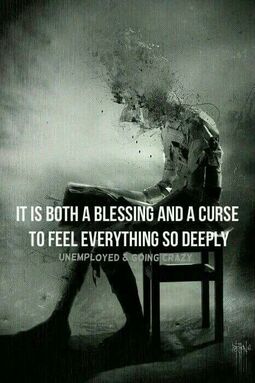 I’ve shared a bit with you about my new fantasy series WIP, as well as one of my contemporary WIP’s, “Glass Animals”, that I think it’s time I share a little bit about my OTHER contemporary fiction, which I am currently calling “How Far You Feel”. While “Glass Animals” was hard to write because it was so personal, this story is challenging for me due to its subject matter and my intensely strong desire to get the representation right. It HAS to be done right. Why, you may ask? Because this WIP is about a 30-something, married woman who had so buried and denied her sexuality her whole life that when she discovers the true depths of her feelings for her best friend, comes to the realization that she’s bisexual. This may not sound like a big deal, but it kind of is because there is a lot of harsh stereotypes around bi people, not to mention the depression that comes from feeling invisible, or completely erased if they are with an opposite sex partner. When I talk to my bi friends about this story, they love the concept. They all tell me how important this is to share and tell, but that’s also where the fear and pressure comes in. My fix for that? Intense research.
I’ve shared a bit with you about my new fantasy series WIP, as well as one of my contemporary WIP’s, “Glass Animals”, that I think it’s time I share a little bit about my OTHER contemporary fiction, which I am currently calling “How Far You Feel”. While “Glass Animals” was hard to write because it was so personal, this story is challenging for me due to its subject matter and my intensely strong desire to get the representation right. It HAS to be done right. Why, you may ask? Because this WIP is about a 30-something, married woman who had so buried and denied her sexuality her whole life that when she discovers the true depths of her feelings for her best friend, comes to the realization that she’s bisexual. This may not sound like a big deal, but it kind of is because there is a lot of harsh stereotypes around bi people, not to mention the depression that comes from feeling invisible, or completely erased if they are with an opposite sex partner. When I talk to my bi friends about this story, they love the concept. They all tell me how important this is to share and tell, but that’s also where the fear and pressure comes in. My fix for that? Intense research.I always do a fair amount of research for my books, even the fantasy ones, but “How Far You Feel” is currently winning the race when it comes to the sheer number of books I’ve gotten from my local library on gender and sexuality. I shudder to think what kind of opinions the poor librarians are forming about me based on my book history there. But I scoured scores of books, took meticulous notes on the history of bisexuality, plus how the orientation fits within the LGBTQA community. I’ve read personal essays about married women who come out late in life and their love for women. I’ve dug deep into how American’s view “real sex” and how damaging such a narrow view can have on pretty much everyone. I’ve talked at length with my friends, dug deep within myself, and I’ve even watched shows and documentaries that deal with the subject matter. Is that enough? I don’t know.
 I spent months and months doing this research, both before I even started writing the story, as well as during the process. Chances are, as I continue with revisions, I’ll go back to the library and see if there are new, or additional resources I can get to help me further shape these characters and their experiences. You may wonder why I’m doing all this for a work of fiction; as fiction, I do have a lot of license to just “go with it” and make things up. But not with this topic, not with this story. My characters may not exist, but that doesn’t mean this situation doesn’t, or that there aren’t others who are struggling with the same thing. With coming out to a straight partner, or that partner suddenly being unsure about their own worth in a relationship because of their partners revelation. It’s a complex situation, one that isn’t fictitious and therefore requires more research and dedication then, say, a purely romance contemporary. This should also explain the nervous pressure I feel when writing this story now, right?
I spent months and months doing this research, both before I even started writing the story, as well as during the process. Chances are, as I continue with revisions, I’ll go back to the library and see if there are new, or additional resources I can get to help me further shape these characters and their experiences. You may wonder why I’m doing all this for a work of fiction; as fiction, I do have a lot of license to just “go with it” and make things up. But not with this topic, not with this story. My characters may not exist, but that doesn’t mean this situation doesn’t, or that there aren’t others who are struggling with the same thing. With coming out to a straight partner, or that partner suddenly being unsure about their own worth in a relationship because of their partners revelation. It’s a complex situation, one that isn’t fictitious and therefore requires more research and dedication then, say, a purely romance contemporary. This should also explain the nervous pressure I feel when writing this story now, right?My research process may involve a lot of notebooks filled with notes and piles of library books, personal accounts and experiences, but there is always that fear and worry that I’m missing something for the story. It’s the risk every author runs for pretty much every book ever. A man writing a woman, a woman writing a male character, a white person writing a black main character, the list goes on and on. Everyday authors tell stories that may not be their own, or not entirely their own, they share voices that aren’t their own, but if the story is important and worth telling, then it’s on that author to make sure they treat that character, that subject matter, with the respect and delicacy it may require. Which means doing your homework and researching the crap out of the topics you may not know.
Hopefully throughout my research process I have accomplished that, but only time will tell. But take it from me, friend: even if it’s scary, be fearless, tell bold stories!
Published on November 01, 2019 11:00
October 14, 2019
New Podcast
My episode of Read.Write.Repeat has gone live! In this podcast, I talk (a lot) about world and character building, my annoyance at love triangles, and avoiding burnout. PLUS there's an additional interview at the end that includes what fantasy worlds I'd want to live in, what authors I'd want to have dinner with, and even my favorite heroes! I'd be forever grateful if you gave it a read and listen:
Podcast with C.E. Clayton
Podcast with C.E. Clayton
Published on October 14, 2019 18:59
•
Tags:
interview, interview-with-author, podcast
October 1, 2019
Welcome to Eerden: Behind My New Fantasy Series
 Hi booknerds, I wanted to share a little bit about my WIP, “Resistor”, with you today and what makes it different from other books in its genre. What is Resistor’s genre? Well, it’s an adult cyberpunk fantasy with science fiction elements! Sounds cool, right? I hope so. Resistor takes place on a world similar-ish to Earth, except that many of the denizens have magic, and there are two humanoid type species—humani (which are what they sound like) and the seersha which are a mash up of the Qunari (from dragon Age) and elf/Drow (like DnD). And while there are plenty of animals and weapons that are similar to Earth, there are plenty that are unique to the world of Resistor—called Eerden.
Hi booknerds, I wanted to share a little bit about my WIP, “Resistor”, with you today and what makes it different from other books in its genre. What is Resistor’s genre? Well, it’s an adult cyberpunk fantasy with science fiction elements! Sounds cool, right? I hope so. Resistor takes place on a world similar-ish to Earth, except that many of the denizens have magic, and there are two humanoid type species—humani (which are what they sound like) and the seersha which are a mash up of the Qunari (from dragon Age) and elf/Drow (like DnD). And while there are plenty of animals and weapons that are similar to Earth, there are plenty that are unique to the world of Resistor—called Eerden. I think the fact that there’s actual magic in a cyberpunk world is fairly unique to the genre, but it’s the creatures that I think really make it stand out. For example, I’ve created a beast that consumes magic. So if a caster happens to stroll into their territory, this beast will hunt them down and eat them, but will leave non-magical things alone. Since the people of Eerden can harness magic within some of their technology, you have to be very careful what, and who, you bring near these creatures. Which, by the way, look like the stuff of nightmares. These magic eaters are not born, they are made. When enough magical run-off and discarded bio-technology come together in landfills and the like, the magic creates life. It takes all those discarded pieces and absorbs any dead matter nearby and creates this new monster. But there isn’t enough magic to give it much of a conscience, which is why it is constantly hunting and devouring anything magical, to try and fill a void that it can’t possibly fill.
I think the fact that there’s actual magic in a cyberpunk world is fairly unique to the genre, but it’s the creatures that I think really make it stand out. For example, I’ve created a beast that consumes magic. So if a caster happens to stroll into their territory, this beast will hunt them down and eat them, but will leave non-magical things alone. Since the people of Eerden can harness magic within some of their technology, you have to be very careful what, and who, you bring near these creatures. Which, by the way, look like the stuff of nightmares. These magic eaters are not born, they are made. When enough magical run-off and discarded bio-technology come together in landfills and the like, the magic creates life. It takes all those discarded pieces and absorbs any dead matter nearby and creates this new monster. But there isn’t enough magic to give it much of a conscience, which is why it is constantly hunting and devouring anything magical, to try and fill a void that it can’t possibly fill.In a similar vein, there is another magical creation that is a bit of this monster’s opposite. It has so much magic within the discarded pieces and parts it’s collected, that not only does it have a childish conscience, but it has enough raw, magical ability to serve as a battery for its magic type. There are four types of magic in Eerden: water, air, earth, and fire. So this friendly being will boost one, or two, of those magic types exponentially. And while they are friendly, they aren’t always cute, they can be pretty weird looking given they are a mix of organic and inorganic material all formed over left-over pieces of technology.
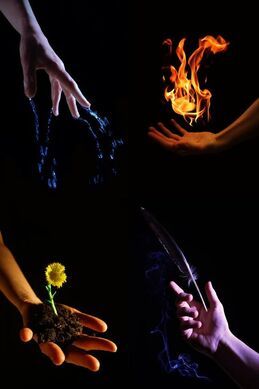 Cyberpunk is one of those hot genres right now, it seems like, given the new game Cyberpunk 2077 and shows like Altered Carbon. But usually cyberpunk is one of those genres that gets lumped into science fiction and can be easy to miss if you aren’t looking for it specifically. Resistor isn’t all that different in that regard, my world does use science fiction when it comes to body modifications, weapons, and even creating AI housed within various kinds of robots. But my cyberpunk is also very atmospheric, it’s used to show a mild dystopian. A world with a thriving criminal underground run by the most powerful, long-lived, seersha casters who peddle in illegal magic based weapons and technology. Which, is a bit typical for cyberpunk; it’s all very dark with splashes of neon and a seedy underground, but mine is also literally magical.
Cyberpunk is one of those hot genres right now, it seems like, given the new game Cyberpunk 2077 and shows like Altered Carbon. But usually cyberpunk is one of those genres that gets lumped into science fiction and can be easy to miss if you aren’t looking for it specifically. Resistor isn’t all that different in that regard, my world does use science fiction when it comes to body modifications, weapons, and even creating AI housed within various kinds of robots. But my cyberpunk is also very atmospheric, it’s used to show a mild dystopian. A world with a thriving criminal underground run by the most powerful, long-lived, seersha casters who peddle in illegal magic based weapons and technology. Which, is a bit typical for cyberpunk; it’s all very dark with splashes of neon and a seedy underground, but mine is also literally magical.I’ve read plenty of science fiction and fantasy throughout my life. Science fiction that use fantasy creatures without magic (al la, Dragonriders of Pern), science fiction that creates crazy living experiments (al la Borne), or sci-fi with sentient AI, and plenty of science fantasies that are like Star Wars where there is “science” but it’s hand waved away and doesn’t even come close to realistic, unlike things such as Star Trek. I’ve read a few cyberpunk books as well, and so far, I haven’t come across any that really feel like my story and what it brings to the genre. The closest I can come to thinking of a similar book or series, is the graphic novel “Saga”, but even that doesn’t feel right. But there are so many wonderful books out there, it’s possible I haven’t discovered a book like mine yet. So tell me, friend, is there a book out there that reminds you of “Resistor”?
Published on October 01, 2019 11:00
September 2, 2019
What is this "balance" you speak of?
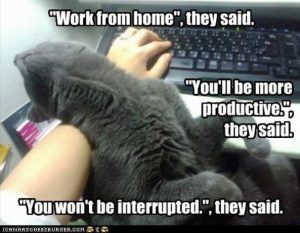 Hey there booknerds, it’s time I finally answer a question I tend to get a lot: how do I balance all my writing, reading, and my social upkeep alongside, well, life. And the answer is tricky, because I am usually teetering, never balancing. I do try! But I think it’s important to understand why it’s hard to find that balance first, because otherwise I tend to get responses like “Oh, that sounds so nice, working from home! I’d stay in my PJ’s all day”, and sure, that does sound nice, but it’s also not the reality of truly working from home on a permanent basis.
Hey there booknerds, it’s time I finally answer a question I tend to get a lot: how do I balance all my writing, reading, and my social upkeep alongside, well, life. And the answer is tricky, because I am usually teetering, never balancing. I do try! But I think it’s important to understand why it’s hard to find that balance first, because otherwise I tend to get responses like “Oh, that sounds so nice, working from home! I’d stay in my PJ’s all day”, and sure, that does sound nice, but it’s also not the reality of truly working from home on a permanent basis.My home has become my office. Everything about it. It’s where I read, where I research new story ideas, it’s also where I craft my bookstagram posts 90% of the time. Because of that, I start to feel this guilt about relaxing, about shutting off and not working when I’m home. Because why would I stop, right? Why am I not filling all those spare moments with things I consider productive for my craft or my business? Because of burn out and depression, friends.
 Working from home means I’ve developed this destructive habit of needing others validation for occupying the space I do. I need something tangible to show the world to justify me being home. It feeds into my imposter syndrome (you can learn more about that here or from my old blog post) which in turn feeds into my depression and overall feelings of inadequacy. Which then turns into a vicious cycle of feeling like I need to do more, more, more, because I theoretically can. See what I mean about the teetering vs. the balancing?
Working from home means I’ve developed this destructive habit of needing others validation for occupying the space I do. I need something tangible to show the world to justify me being home. It feeds into my imposter syndrome (you can learn more about that here or from my old blog post) which in turn feeds into my depression and overall feelings of inadequacy. Which then turns into a vicious cycle of feeling like I need to do more, more, more, because I theoretically can. See what I mean about the teetering vs. the balancing?But I am starting to learn that the breaks are good. The breaks mean recharging, which means when I do get back to work, I have a plethora of energy and creative ideas that my stories and characters, and certainly you, all get to benefit from. It also means I can get in touch with what’s going on in my life that might need more attention, whether that’s my family and friends, or just my own body. So, then the question becomes what do I do in order to recharge? To silence my imposter syndrome, and start feeling like me and my work are, indeed, “good enough”? I get out of the house.
I know that sounds overly simplistic, and it’s meant to. It is that simple, but also that hard. I’ve gone back to treating the weekends like weekends again, not work days, so that means actually going out and doing something new, or walking through botanical gardens, or even just going out to dinner, but it does mean leaving the house. It also means that I rely heavily on my husband to help me fill the hours with non-work activities, and sure, sometimes that’s just chores, but other times it’s playing video games or watching movies. Point is: I’m not in front of my computer. Plus, whenever I can, I travel. It doesn’t need to be very far—just a few hours’ drive out of town for a weekend getaway works. But being physically too far away from home to where I can’t just go home does wonders for reducing my work and productivity related stress. And, of course, whenever I can I go outside for pleasure during the normal work day, too. Add a little music to my time outside and suddenly, that plot hole I was struggling with is no longer a hole!
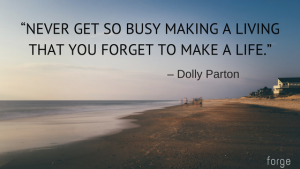 I am by no means an expert at balancing work and life, I am pretty terrible at it most of the time. I forget how to relax. My days are terribly structured from the moment I get dressed until the moment I sit down for dinner. I like order and ticking off those check boxes on my to-do list. But, chaos feeds creativity sometimes and you don’t get that by staying glued to whatever it is your job requires. That’s why me getting physically away from all the things I could do in order to “work” is, right now, the only way I can really balance things. But like I said, I am trying! If you have tips on how to achieve work and life balance, I’d love to hear them!
I am by no means an expert at balancing work and life, I am pretty terrible at it most of the time. I forget how to relax. My days are terribly structured from the moment I get dressed until the moment I sit down for dinner. I like order and ticking off those check boxes on my to-do list. But, chaos feeds creativity sometimes and you don’t get that by staying glued to whatever it is your job requires. That’s why me getting physically away from all the things I could do in order to “work” is, right now, the only way I can really balance things. But like I said, I am trying! If you have tips on how to achieve work and life balance, I’d love to hear them!
Published on September 02, 2019 10:30
August 1, 2019
It Hurts To Be Human: The Hardest Character I've Ever Written
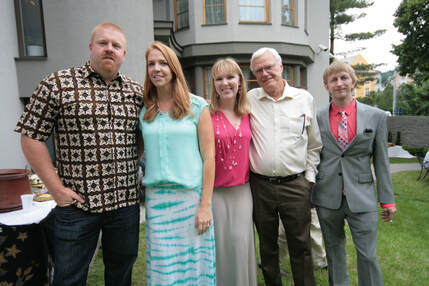 Hi booknerds, it’s time we talked about the hardest character I’ve ever written. Most people would—rightly—assume that the hardest character to write would be one that is the polar opposite of the writer, whether because of gender, sexual orientation, or the oppression they suffered that the author has never experienced. All of that is hard to do, and even harder to craft a believable, well written character that the author has no first-hand experience with in “the real world”. While that is true of me too, the hardest character I’ve written to date is actually in the contemporary fiction, family saga novel I’m working on. Why is this character so difficult? It’s not because I don’t have any experience with what they are going through, but the exact opposite!
Hi booknerds, it’s time we talked about the hardest character I’ve ever written. Most people would—rightly—assume that the hardest character to write would be one that is the polar opposite of the writer, whether because of gender, sexual orientation, or the oppression they suffered that the author has never experienced. All of that is hard to do, and even harder to craft a believable, well written character that the author has no first-hand experience with in “the real world”. While that is true of me too, the hardest character I’ve written to date is actually in the contemporary fiction, family saga novel I’m working on. Why is this character so difficult? It’s not because I don’t have any experience with what they are going through, but the exact opposite!In this particular WIP, the main character’s older brother has Asperger’s Syndrome. This diagnosis is something she is unaware of, so because of the issues that has caused in her childhood, she grew up hating her brother and feeling like an outcast to her own family. This, dear friends, is very close to my actual childhood. My brother has Asperger’s which, if you are unfamiliar, is on the Autistic scale and is often misdiagnosed as ADHD in young children—medicating children with Asperger’s with ADHD medication doesn’t help at all, by the way. People with Asperger’s have extreme difficulty reading social cues; they don’t know when people are kidding or, as kids, don’t understand when other children play make-believe games. Making friends for them is very difficult, so they are often lonely and depressed, and don’t know how to communicate that depression, which means it can often come out as a type of violent anger. Like any mental condition, there is a scale of how severe or benign Asperger’s Syndrome can present itself. For my brother, he had one of the more severe kinds and, as a kid growing up in the 90’s where this kind of thing was barely understood and rarely talked about, figuring out what was going on and how to treat it was a battle in and of itself.
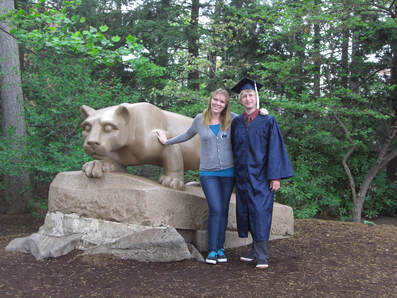 I’m really not looking for pity or sympathy here. The purpose of this particular novel is to educate and to give others who may be dealing with similar issues a beacon of hope. It took me years,
YEARS
to see my brother as more than his condition and to appreciate that my parents were doing their best with the resources they had available to them at the time. I have, with the help of therapy, healed and moved on with my life and have a great relationship with my family, especially my parents. But,
deep down, this was a story I felt needed to be shared, especially now given how we as a society still struggle with treating mental illnesses and showing compassion for those who struggle, and those people who love them despite the challenges.
I’m really not looking for pity or sympathy here. The purpose of this particular novel is to educate and to give others who may be dealing with similar issues a beacon of hope. It took me years,
YEARS
to see my brother as more than his condition and to appreciate that my parents were doing their best with the resources they had available to them at the time. I have, with the help of therapy, healed and moved on with my life and have a great relationship with my family, especially my parents. But,
deep down, this was a story I felt needed to be shared, especially now given how we as a society still struggle with treating mental illnesses and showing compassion for those who struggle, and those people who love them despite the challenges.
But writing that was incredibly difficult for me emotionally. I had to go back and rely on my past childhood experiences and dig up painful memories in order to create this character and show why she feels the way she does toward her family, without the reader hating her or her brother for it. Of all the books I have written, some of which are still in the editing phase, this took me the longest to “finish”. It was so emotionally taxing; I had to talk to my family and make sure they understood that while this story was inspired by the things we went through, it wasn’t about them, and I had to make sure that come the end, my readers still felt hopeful and like my main character was going to be okay. There were so many instances where I started crying during writing different scenes that it isn’t even funny. Plus, because it is so personal to me, deeming it “done” and packaging it all up so it can move forward in the publishing process was legitimately terrifying for me! So much of this was my life that the idea of someone picking it apart was something I had to work very hard to mentally prepare myself for.
 So while, yes, writing a character that you have no real experience with can be challenging, so can writing a character that is so much a reflection of yourself. That line of fact and fiction got so blurred at times and I wanted to make sure that I was portraying everything truthfully, but that it didn’t come across as villainous. Writing these characters, this book, took so much out of me that it’s taken a long time to get my emotional reserves back to a place where I can write happy, or funny, characters again that I can safely say: writing a character based on me was the hardest character I’ve ever written.
So while, yes, writing a character that you have no real experience with can be challenging, so can writing a character that is so much a reflection of yourself. That line of fact and fiction got so blurred at times and I wanted to make sure that I was portraying everything truthfully, but that it didn’t come across as villainous. Writing these characters, this book, took so much out of me that it’s taken a long time to get my emotional reserves back to a place where I can write happy, or funny, characters again that I can safely say: writing a character based on me was the hardest character I’ve ever written.
Published on August 01, 2019 15:00
July 2, 2019
Creating Tallis's Antagonist
 Well booknerds, now that all the books in The Monster of Selkirk have been released and the final book has been out for over a month, I wanted to take this opportunity to talk about how I created Tallis’s villains, particularly her ultimate foe which gets introduced in the 5th book in the series: Urban. If you haven’t caught up yet, don’t worry, I’ll avoid plot based spoilers so you you’ll be safe to read on. However, if you want to wait to catch up on the books before reading, that’s fine too! You can get the books here, or signed copies from my Etsy store, which ever you prefer! But now, allow me to share a bit as to why I created villains that were more relatable, or sympathetic, instead of the stereotypical mustache twirling bad guy.
Well booknerds, now that all the books in The Monster of Selkirk have been released and the final book has been out for over a month, I wanted to take this opportunity to talk about how I created Tallis’s villains, particularly her ultimate foe which gets introduced in the 5th book in the series: Urban. If you haven’t caught up yet, don’t worry, I’ll avoid plot based spoilers so you you’ll be safe to read on. However, if you want to wait to catch up on the books before reading, that’s fine too! You can get the books here, or signed copies from my Etsy store, which ever you prefer! But now, allow me to share a bit as to why I created villains that were more relatable, or sympathetic, instead of the stereotypical mustache twirling bad guy.For me, personally, I love reading books where the antagonist is more complex than someone who merely wants to watch the world burn because of reasons. You see it a lot in some of the Marvel movies, where the bad guys want ultimate power so obviously the only way to get that is to destroy the world. That can be fun and exciting, sure, but I like reading about deeper villains, which is why I did my best to create complex villains as well. This is where Urban comes in. Urban is deeply religious, his mother was an acolyte of sorts in the service of the human god. He loves his religion, he believes in its teachings full-heartedly, so much so that when his psychosis grips him, that yearning for his god gets severely twisted and is turned into a destructive religious fanaticism.
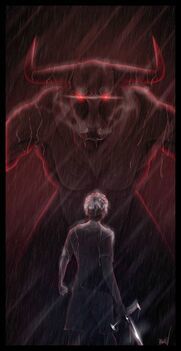 Even if you aren’t religious or don’t believe in god, I think everyone can kind of empathize, or at least understand, someone’s desire to know that their prayers are heard, that there is a reason for their struggles, or that there is indeed a purpose or plan for them and their place in the world at large. This kind of desire spans most religions too; it’s that comforting belief that an all-powerful, all knowing entity is looking out for you and there is a reason behind all the good, or bad, in your life. For characters like Tomas, these type of thoughts help bolster is faith, but for Urban, it took the darker path. It became a desperation to bring their god to earth so that they could converse with this entity, that he could become his prophet, and end the prolonged silence the humans have had when praying. Urban doesn’t yearn for ultimate power, riches, or glory, he has no desire to watch the world burn just for evils’ sake. Urban’s extreme faith, coupled with the illness lurking within him, propels him to seek out god, despite the fact that no mortal could ever understand the reasons for such an entities silence when it comes to their creations.
Even if you aren’t religious or don’t believe in god, I think everyone can kind of empathize, or at least understand, someone’s desire to know that their prayers are heard, that there is a reason for their struggles, or that there is indeed a purpose or plan for them and their place in the world at large. This kind of desire spans most religions too; it’s that comforting belief that an all-powerful, all knowing entity is looking out for you and there is a reason behind all the good, or bad, in your life. For characters like Tomas, these type of thoughts help bolster is faith, but for Urban, it took the darker path. It became a desperation to bring their god to earth so that they could converse with this entity, that he could become his prophet, and end the prolonged silence the humans have had when praying. Urban doesn’t yearn for ultimate power, riches, or glory, he has no desire to watch the world burn just for evils’ sake. Urban’s extreme faith, coupled with the illness lurking within him, propels him to seek out god, despite the fact that no mortal could ever understand the reasons for such an entities silence when it comes to their creations.Knowing Urban’s motivations made it all the easier to craft the kinds of interactions he had with other characters, both those who yearn for their god the way he does and would be tempted by his fanaticism, and those who don’t feel nearly as strongly as Urban does, or whose faith is strong enough to not be tempted by Urban to begin with. It made him a villain people could understand, even in the fantasy setting. His wants and desires are pretty universal. It also adds a sympathetic layer to him, one that makes Tallis’s guilt surrounding the whole Urban situation understandable. And, for some people and characters, makes him a person that many would want to see saved or redeemed, or, on the other spectrum, have him succeed in his plans.
 Villains, like the monsters I talked about in April’s blog post, can be complex, multi-dimensional creatures that make you feel uncomfortable because you can relate to them—maybe, depends on the monster. Good villains are ones that you love to hate, but they can also be ones you understand and that a little part of you wants to see succeed, even if the method in which they go about things is evil. They make, in my opinion, for far more interesting reads, even if the story they inhabit isn’t the most original I’ve ever read. Also, I happen to have the most fun writing complex villains that serve more of a purpose than just an obstacle to the main character on their path toward achieving whatever goal they set out to do. Hopefully I have succeeded in doing that with Urban, but be sure to read the “Wrath of Silence” and let me know!
Villains, like the monsters I talked about in April’s blog post, can be complex, multi-dimensional creatures that make you feel uncomfortable because you can relate to them—maybe, depends on the monster. Good villains are ones that you love to hate, but they can also be ones you understand and that a little part of you wants to see succeed, even if the method in which they go about things is evil. They make, in my opinion, for far more interesting reads, even if the story they inhabit isn’t the most original I’ve ever read. Also, I happen to have the most fun writing complex villains that serve more of a purpose than just an obstacle to the main character on their path toward achieving whatever goal they set out to do. Hopefully I have succeeded in doing that with Urban, but be sure to read the “Wrath of Silence” and let me know!
Published on July 02, 2019 11:30
June 6, 2019
Creating a Spooky Fae Story
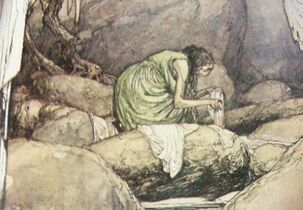 Hi booknerds! So last month I talked a bit about the inspiration behind my first short horror story, “The Cautionary Tale of Bertrand Allary”, so this month I want to share some behind the scenes information for my second short horror story
“The Washerwoman”
. This story is very different from my first, as it doesn’t draw from local New Orleans legends, even though I wrote it while still living in the South. For this particular tale, I drew inspiration from one of the faeries that I found in “The Great Encyclopedia of Faeries”. I’ve owned this book forever and it has some absolutely stunning illustrations in it, as well as a plethora of faerie creatures I have never heard of before.
Hi booknerds! So last month I talked a bit about the inspiration behind my first short horror story, “The Cautionary Tale of Bertrand Allary”, so this month I want to share some behind the scenes information for my second short horror story
“The Washerwoman”
. This story is very different from my first, as it doesn’t draw from local New Orleans legends, even though I wrote it while still living in the South. For this particular tale, I drew inspiration from one of the faeries that I found in “The Great Encyclopedia of Faeries”. I’ve owned this book forever and it has some absolutely stunning illustrations in it, as well as a plethora of faerie creatures I have never heard of before.One such Faerie is known as the Washerwoman, or Washerwomen really, as there are usually more than one. You won’t find much on these faeries on the internet, but according to my book, these creatures are kind to the innocent but spiteful toward nighttime offenders—basically people who disturb the peace of the night by trashing nature. They are known to redeem bad deeds through their washing, so if a passerby is say, returning from Church, they may be forced to wash alongside these spirits, but it would not be the end of them. The origins of these Washerwomen can either come from being the opposite side of the good faeries, or they could be faeries that have done terrible spells, but for my tale, I choose the third potential origin: a mother guilty of infanticide. Once someone is lured to these women, and they are not innocent, the only option of breaking the curse is to constantly wring the washing in the opposite direction of the Washerwomen at all times. If the not-so-innocent-victim forgets this, then the shroud they are washing will wrap around their wrists, arms, their whole body, until they are wrung and twisted and are utterly crushed before being drug under water.
I really loved all the tragic elements of the Washerwomen, especially if their origin was of a mother who killed their child. There is so much potential in that as to why they would commit such an act. Also, I loved that these faeries lured people who were not good, who were sinners of some kind, but could redeem themselves if they knew what to do. Reading about these monstrous faeries made me really excited for 1. What lead to a Washerwoman becoming the creature she is and 2. The kind of person she would attract. Would this person be an all-around bad guy who can’t be redeemed? Or would they be sympathetic and you’d want them to remember to wring their hands in the opposite direction of the Washerwomen? There were just so many possibilities!
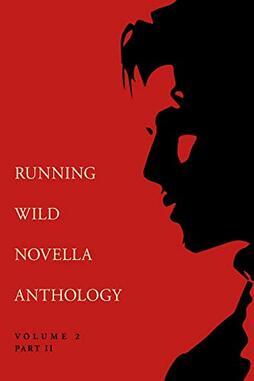 Of course, such a faerie needed the right setting as well. You aren’t going to find a woman doing her wash in the Los Angeles River luring people who destroy nature at the dead of night, for example. That kind of atmosphere clashed far too much with the vision I had for this particular faerie. Given that places like Ireland and Scotland seem to be the birthplace of so many different kinds of Fae creatures, I felt a pre-industrial Ireland would be the best setting for “The Washerwoman” as it added a bit of believability to the tale and, as I was working on The Monster of Selkirk which draws inspiration from Scotland, writing in a familiar setting with similar dialogue was something I was very comfortable with.
Of course, such a faerie needed the right setting as well. You aren’t going to find a woman doing her wash in the Los Angeles River luring people who destroy nature at the dead of night, for example. That kind of atmosphere clashed far too much with the vision I had for this particular faerie. Given that places like Ireland and Scotland seem to be the birthplace of so many different kinds of Fae creatures, I felt a pre-industrial Ireland would be the best setting for “The Washerwoman” as it added a bit of believability to the tale and, as I was working on The Monster of Selkirk which draws inspiration from Scotland, writing in a familiar setting with similar dialogue was something I was very comfortable with.Now that I had the setting and the monster all figured out, I needed to figure out what kind of main character I wanted. Given what the Washerwomen do, I decided I wanted a main character that was just awful—as in you want to see him get what he deserves. It was fun writing a character that is irredeemable, as it was so different from what I’d been doing with The Monster of Selkirk! But I won’t say more than that to avoid spoilers regarding what happens with my Washerwoman and her would-be victim. If you’re intrigued by it though, you can read the whole story in “Running Wild Novella Vol. 2 Part 2”!
Published on June 06, 2019 09:30
May 1, 2019
Creating Bertrand's Story
 Which of you booknerds has ever heard of a rougarou? Anyone? Well, in case you haven’t, or have but are curious to learn a bit more, allow me to tell you: a rougarou is a Cajun legend of a beast that traditionally prowls the swamps around the Greater New Orleans area and is most often depicted as a human with a dogs head—Louisiana does not have wolves native to the area. But if it sounds like a werewolf, you’d be right! It has several similarities, but is also different enough to be classified as its own monster. As I lived in New Orleans for a few years, I was fascinated by many of the local legends and beasts, so much so that the rougarou and New Orleans itself became the inspiration for my short horror story “The Cautionary Tale of Bertrand Allary”.
Which of you booknerds has ever heard of a rougarou? Anyone? Well, in case you haven’t, or have but are curious to learn a bit more, allow me to tell you: a rougarou is a Cajun legend of a beast that traditionally prowls the swamps around the Greater New Orleans area and is most often depicted as a human with a dogs head—Louisiana does not have wolves native to the area. But if it sounds like a werewolf, you’d be right! It has several similarities, but is also different enough to be classified as its own monster. As I lived in New Orleans for a few years, I was fascinated by many of the local legends and beasts, so much so that the rougarou and New Orleans itself became the inspiration for my short horror story “The Cautionary Tale of Bertrand Allary”.There are several variations to the rougarou legend, some of the most common deviations are used like boogeyman stories to scare children into obedience, particularly around Lent. Where if you break Lent 7 years in a row, you’ll be turned into the dog-like beast. But another variation that I liked more and served as the basis for my rougarou was the blood sucking version —this is New Orleans after all, I’d be remiss not to draw from the legend with vampire vibes as well. In this version, a rougarou is under the spell for about a third of a year, but the curse can be passed from person to person when the rougarou draws human blood. During the day, the rougarou reverts to human form, if they draw blood from a new victim, but often appears very sickly in the daytime. They can’t tell anyone of their curse though, for if they do, the curse remains permanent. It’s tragic and terrifying, and exactly the kind of folktale I love!
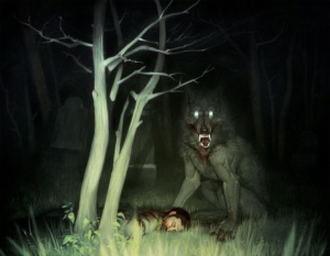 Additionally, when I was brand new to New Orleans, I was intrigued by its history: how and when they drained most of the state to be livable and its long history of organized crime, to be exact. It was such an interesting time that it felt like too good of a backdrop to go to waste. Which is why I based “The Cautionary Tale of Bertrand Allary” in the early 1920’s. Then, to marry that with the legend of the rougarou? It created such a wonderful, atmospheric vibe that, even though I don’t often write strictly horror stories, I had a blast writing Bertrand’s tale.
Additionally, when I was brand new to New Orleans, I was intrigued by its history: how and when they drained most of the state to be livable and its long history of organized crime, to be exact. It was such an interesting time that it felt like too good of a backdrop to go to waste. Which is why I based “The Cautionary Tale of Bertrand Allary” in the early 1920’s. Then, to marry that with the legend of the rougarou? It created such a wonderful, atmospheric vibe that, even though I don’t often write strictly horror stories, I had a blast writing Bertrand’s tale.What followed was the story of how one man delves into a curse and sickness he doesn’t understand, or truly believe in. Because, really, who would honestly believe something like a rougarou existed? The story documents his descent into becoming both a villain and a monster, along with how he tries to combat that change. I don’t want to share too much more than that in order to avoid spoilers with what becomes of Bertrand and his friends, but if you are intrigued and want to read the whole of the story, be sure to get a copy of “The Heart of the Devil” villains anthology where the story appears in full!
Published on May 01, 2019 13:30



